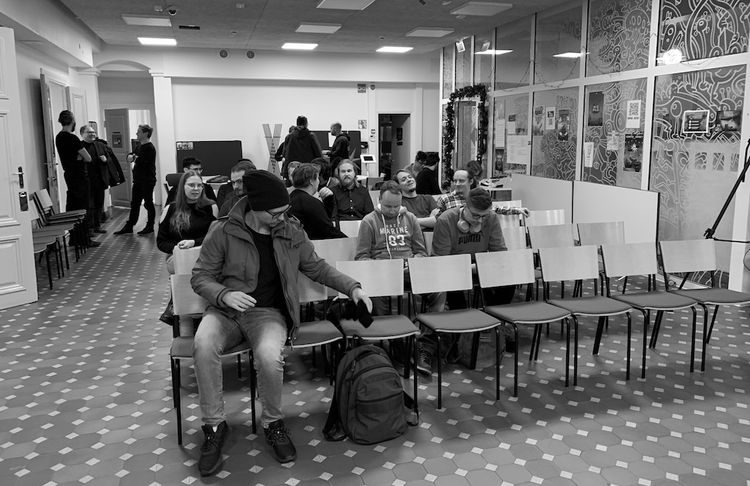EGD News #152 — Mitch Lasky interview


It was September 2013, and we were in Silicon Valley to pitch Next Games to local investors. We connected with Mitch Lasky from Benchmark to talk about our company.
We’d heard from others that Mitch was great, but after the meetings, I was blown away by how much insight and understanding he had.
Benchmark didn’t invest in Next Games, but the meeting with Mitch left me feeling awe and respect towards Mitch, which is incomparable even today to the gaming investors I meet. I think only Are from London Venture Partners comes close to Mitch’s insight into gaming.
In early September 2022, I noticed that Mitch Lasky had done an interview with Patrick O’Shaughnessy on Invest Like The Best podcast. I’ve previously shared highlights from Patrick’s interviews on EGD News, including ones with Ilkka Paananen, Matthew Ball, Gabe Leydon, and others.
Mitch’s interview on:
and Spotify
This 72-minute interview with Mitch Lasky was one of the best games business podcasts ever. I wanted to dissect and highlight the show’s key topics and insights covered.
How Mitch invests in games
Mitch is one of the most curious investors in gaming. He talks about how he spends time with game designers to continuously develop his theory on what makes games fun.
I’m a curious person, and I engage in many conversations with [game developers] about what makes a game fun and their theory of fun? I have internalized a lot of that in my investing; I feel like I have a strong sense of what makes a game fun, and I bring that to the table.
It’s an important skill set because it’s easy to look at the market and then take a spray and pray approach, an index fund approach to the games business. I think you can lose a lot of money that way.
Later in the podcast, Mitch talks about how he decided to invest in Riot Games, which was just the team and an idea at the time. In the meeting, he focused on the company building, the business side, and the creative aspects.
15 minutes into the [pitch] meeting, I was thinking, I am going to do this, I’m going to invest in this company. These people are so compelling, they will die to make this product, and they know exactly what they’re doing, and they’re able to answer all of my questions and anticipate them in ways that I couldn’t have imagined.
I was like, bring me Steve Snow, the executive producer because I needed to talk to the guy who actually knows how to make a game. I spent some time with him, and he convinced me these guys had their heads screwed on. I green-lit the investment and [Riot] obviously has gone on to be an extremely important and successful company.
Two components on making a gaming investment for Mitch:
a) Founders are extremely prepared and committed to seeing the company become something
b) Then, Mitch talked to the creative product person to get a final read.
What’s going on in gaming right now
First, mobile:
When talking about the present situation in mobile, Mitch cautions that a UA-driven go-to-market approach will need to change. He talks about his partner at Benchmark, Bill Gurley, who wrote a piece on the dangers of “LTV worship.”
In that piece, Bill highlights ten reasons why it’s dangerous, but I’ll point out one that matters to gaming in 2022:
LTV is a Tool, Not a Strategy. Heavy LTV companies forget that the LTV model does not create a sustainable competitive advantage. You shouldn’t confuse output with input. The LTV formula is a measurement tool to be used by marketing to test the effectiveness of their marketing spend – nothing more and nothing less.
— Bill Gurley
Mitch concludes well with the ideal mindset for go-to-market in gaming:
When that [customer acquisition and customer lifetime value] stuff starts to fall over, it falls over really fast and really dramatically. I find those patterns to be very dangerous. That’s why I’ve always gravitated towards products with much more organic distribution opportunity.
Then, web3 and the challenge of integrating earning mechanisms with fun games:
The clash between the speculator model and enjoyable gameplay is an evident conflict. The problem with Axie and other big crypto gaming hits of 2021 was that the single motivation of play-to-earn hasn’t been sustainable.
Mitch highlights the lessons learned from games like Eve Online, which facilitate several roles for players, emergent from the gameplay.
In Eve, a player can run a corporation that handles the coalition of dozens or hundreds of planets and fleets. Or armadas that can go out into space and deal death. That could be an important role for this “speculator.” Something that integrates them into the community and the play experience in a way where owning an NFT doesn’t.
And I think the danger is that you create this bifurcation where the people that own the NFTs have a motivation that has nothing to do with the play experience.
Few more games investing gems
I still wanted to highlight two additional points that Mitch brought up on the podcast.
First, the gaming platforms.
Mitch talks about the platform-based publisher: Steam, etc., and how you end up having a platform where you can publish games.
Path 1: Migrate an existing aggregation of users to gaming, like Tencent seeded their games layer from users already on services like QQ.
Path 2: Having a piece of must-have content to seed the aggregation of users. I.e., Steam with Half-Life, Disney+ with their IP based must have content.
For me, the big takeaway was the insight around the conflict in the narrative of us, the game industry operating in a hits-driven business narrative. Mitch highlights this conflict well from the investor lens:
Investors have historically said you need a hit game to build that aggregation. They’ve seen [the hit-driven nature of the business] as something negative, something wrong with that paradigm. I think [the hit-driven nature] is very natural, and I see it in other entertainment industries. It doesn’t seem that weird to me that content is the pole that creates the initial aggregation.
Second, what advice would Mitch give to aspiring gaming investors?
I’ve found personally in my evaluation of games investments that having those creative chops, having been a creative executive, and having had to make green light decisions over product is incredibly valuable in evaluating the possibilities engendered by some of these potential games investments.
I would like you to listen to this entire interview. You can go here to do so.





